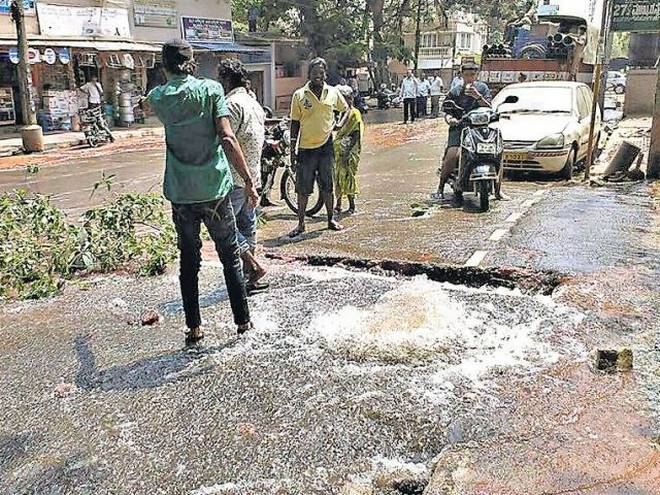Every year, when the drought strikes India and the earth cracks, the most visible response to the crisis are trains with tank wagons full of water, a measure ‘desperate’, which still does not tackle the problem.
The last of these trains arrived this week to the western city of Latur loaded with 2.5 million liters of water, and its presence generated long lines of impatient women and children.
The measurement of the railway with tank wagons was instituted for the first time thirty years ago in the state of Gujarat, without major changes since then.
According to Tare, ‘the government is trying to make changes in depth and the main change it is trying to make is to shift the responsibility of water management to individuals’.
In India, the waste of water reaches gigantic proportions. The sector at the head of the waste of water in India is the agricultural sector, on which 50% of the population depends and which uses in a generalized way the irrigation system by flood, with which 70% is wasted.
But the question that many still ask is how it can be that in a country like India, where the torrential monsoon rains traverse its territory annually from June to September, there may be such a shortage of water.
According to the Department of Meteorology of the Asian giant, the monsoon usually generates rain in India with an average of total accumulated of 887 millimeters, having been in 2015 somewhat lower, 760 millimeters.
Therefore, experts refuse to link the drought only to the current lack of rainfall. ‘This is not a crisis, we can not talk about the crisis. It is a failure in our efforts, “the president of the Water Foundation of India, Arvind Kumar, told Efe.
Kumar insisted that in India there are heavy rains every year, but that water is not administered, which generates a strong dependence on rivers like the Ganges, a “lifeline” that crosses the country and from which they make use of. 500 million people.
Water is a scarce resource, at this time we must do everything we can to use it rationally. Our volunteers are trying to keep one of Bangalore’s small rivers, the Kumudvathi, from drying out. They are planting trees in the area to help them avoid soil erosion, building barriers with stones. Everything that can help revive and revitalize our natural reserves must be carried out, at this precise moment. ”
While the authorities have decreed the obligatory nature of collecting rainwater in all houses in Bangalore over 223 square meters, many have avoided the problem of having to install a rainwater collection system. Local authorities must get down to work to ensure that this ingenious solution is implemented in a time of crisis like this.
The way in which Bangalore addresses this issue will be crucial since the same model can be used to solve water crises in other cities that are at the same level of urbanization. Now what is needed is for the authorities and a united front of citizens to take action to help conserve the scarce water available.

